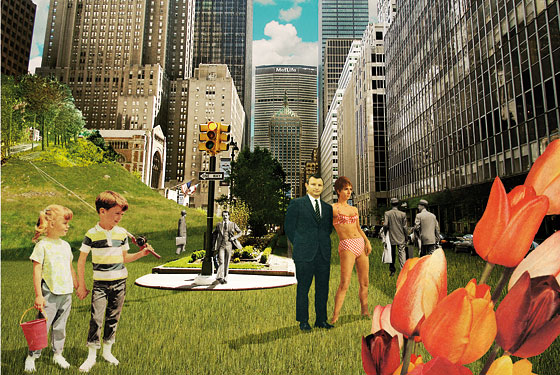
Now that the mayor has done his best to purge New York City of murder, smoking, and trans fats, he’s turned his attention to another nuisance: catastrophic climate change. This past April, the Bloomberg administration issued PlaNYC, a grand strategy to allow our population to increase while reducing its impact on the environment. If we built new power plants, required all new buildings to meet standards of green design, and managed to house most of the coming horde close to subway stations and bus stops, New York could eliminate 33.6 million metric tons of noxious emissions by 2030, according to city estimates. It’s an ambitious and expensive plan, larded with ifs. Political will may wither, Washington might not cooperate, private developers could rebel, the economy might deflate, or another terrorist attack could push environmental concerns into the background. But PlaNYC is also filled with common sense, and the beauty of it is that it preserves the urban lifestyle while saving the planet at the same time.
In the meantime, a small but rising number of New Yorkers already live and work in little environmental Utopias: buildings designed to do as little harm as possible. The new Hearst and New York Times towers are both showcases of clean technologies, including lots of recycled steel and lighting systems that respond to the weather. Developers of high-end residential buildings have been upping the ante on energy-saving technologies, turning environmental virtue into a luxury feature. As real estate has evolved from shelter into just another consumer product, the urge to upgrade has been harnessed to serve green goals. In the long run, what matters is making green design the norm, rather than a perk. Local Law 86, which went into effect last January, holds municipal building projects to stringent green standards, and in August the city completed the Morrisania Homes in the Bronx, the city’s—and the state’s—first green affordable-housing development.
Actually, though it’s hard to believe when you’re wading across Canal Street through a haze of fumes, New York is already the ozone layer’s friend. Taken as a whole, the city is a major polluter, churning out more greenhouse-gas tonnage than the entire nation of Norway. But in individual terms, New Yorkers are up there with the Amish. While in the rest of the country, Americans are building ever-bigger houses and burning more and more gas, people here take the subway and live in what real-estate brokers euphemistically describe as “cozy” apartments. As a result, a typical New Yorker uses less than a third as much electricity as an average Dallas resident. When friends and relatives in verdant parts of the country ask how you can tolerate the wind-borne litter, endless jackhammering, and rancid summer air, here’s a quantifiable measure of environmental virtue: The average American churns out 24.5 metric tons of planet-heating pollutants every year; a New Yorker produces 7.1.
What this means is that every person who moves to—or stays in—New York City rather than buying a house in the suburbs is automatically helping to slow global warming. By the city’s estimates, attracting 900,000 new residents by 2030 would prevent 15.6 million metric tons of gases from corroding the atmosphere. The greenest thing New York can do is grow.

37.
“Because when your boyfriend breaks up with you at 2 a.m. on a Tuesday night, you can always find a bar that is full of hot people with a bartender that will feed you shots and a cute boy that you can make out with.”
—Kara Cady-Sawyer
38.
“Because people will use antibacterial after using the subway one stop, but not after picking up after their pets in the park.”
—Jessica Hyman
